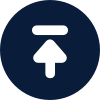
I. Introduction
1. Screen scraping software is a tool or software program that allows users to extract data from websites or web applications. It works by simulating human interaction with the website or application, capturing the desired data, and saving it in a structured format such as CSV or Excel.
2. There are several reasons why you may need
screen scraping software:
- Data Extraction: Screen scraping software can help you gather large amounts of data from websites or web applications quickly and efficiently. This can be useful for market research, competitor analysis, lead generation, or any other task that requires collecting data from multiple sources.
- Automation: Screen scraping software can automate repetitive tasks that involve extracting data from websites. Instead of manually copying and pasting information, the software can do it for you, saving you time and effort.
- Integration: Screen scraping software can integrate with other applications or systems, allowing you to transfer data seamlessly between different platforms. This can streamline your workflow and make data sharing more efficient.
3. In terms of security, stability, and anonymity, screen scraping software offers several core benefits:
- Security: Screen scraping software can provide a layer of security by allowing you to access websites and extract data without exposing your IP address or personal information. This can be useful when dealing with sensitive or restricted websites that may block or restrict access based on IP addresses.
- Stability: Screen scraping software ensures stable and consistent data extraction by handling website changes, such as updates to HTML structure or dynamic content. It can adapt to these changes and continue to extract data accurately, minimizing disruption to your workflow.
- Anonymity: Screen scraping software can anonymize your online activities by rotating IP addresses or using proxy servers. This can help protect your identity and prevent websites from tracking or blocking your scraping activities.
These benefits contribute to a more secure, stable, and anonymous data extraction process, allowing you to gather information efficiently and effectively.
II. Advantages of screen scraping software
A. How Do screen scraping software Bolster Security?
1. Screen scraping software contributes to online security in several ways. Firstly, they provide a layer of protection by acting as an intermediary between the user and the target website. This means that the website being scraped does not directly interact with the user's device, reducing the risk of exposure to potential threats.
2. To protect personal data, screen scraping software often employ encryption techniques, ensuring that any data transmitted between the user and the target website is securely encrypted. Additionally, they may offer features such as data anonymization and masking, which help to further safeguard sensitive information.
B. Why Do screen scraping software Ensure Unwavering Stability?
1. Screen scraping software can help maintain a consistent internet connection by utilizing advanced algorithms and techniques to handle various network conditions. They can automatically handle connection failures, timeouts, and other disruptions, ensuring uninterrupted scraping processes.
2. Stability is crucial when using screen scraping software, especially in specific online tasks such as data extraction or automated monitoring. Unwavering stability ensures that the scraping process runs smoothly and reliably, minimizing the chances of incomplete or inaccurate data retrieval.
C. How Do screen scraping software Uphold Anonymity?
1. Yes, screen scraping software can contribute to achieving anonymity. By acting as an intermediary, they mask the user's IP address and other identifying information from the target website. This helps to preserve the user's anonymity while accessing and scraping data.
2. Some screen scraping software may offer features like rotating IP addresses or proxy servers to further enhance anonymity. These features allow users to appear as if they are accessing the website from different locations or devices, making it harder to trace their activities back to a specific individual or entity.
In summary, screen scraping software bolsters security by acting as a protective layer, providing encryption and data protection measures. They also ensure unwavering stability by handling network disruptions. Additionally, screen scraping software uphold anonymity by masking the user's identity and offering features like rotating IP addresses.
III. Selecting the Right screen scraping software Provider
A. Why is screen scraping software Provider Reputation Essential?
1. Assessing and identifying reputable screen scraping software providers is crucial because it ensures the quality and reliability of the software. A reputable provider will have a track record of delivering effective and secure solutions, which helps to build trust among users.
B. How does pricing for screen scraping software impact decision-making?
1. The pricing structure of screen scraping software providers can significantly influence the decision-making process. High pricing may deter potential users, especially if they are on a tight budget. On the other hand, extremely low-priced options may raise concerns about the quality and reliability of the software.
2. Achieving a balance between screen scraping software cost and quality can be done by considering factors such as the provider's reputation, features offered, customer support, and the scalability of the software. It is important to weigh the cost against the value and benefits that the software can provide.
C. What role does geographic location selection play when using screen scraping software?
1. Having diversity in screen scraping software locations can benefit various online activities in several ways. Firstly, different regions may have varying legal and regulatory environments, which can impact data access and usage. Choosing providers in different locations can help navigate these complexities and ensure compliance.
2. Geographic diversity can also enhance performance and reliability. By selecting providers in different regions, users can distribute their requests and avoid overloading a single provider's servers, resulting in faster response times and improved stability.
D. How does customer support affect the reliability when using screen scraping software?
1. Evaluating a screen scraping software provider's customer service quality is important for ensuring reliability. Prompt and efficient customer support can help resolve any issues or concerns that may arise during the usage of the software.
2. Guidelines for evaluating customer service quality include considering the provider's response time, availability of support channels (such as email, live chat, or phone), and the expertise and helpfulness of the support team. User reviews and feedback can also provide insights into the provider's customer support reputation.
By considering these factors, users can make informed decisions and select reputable screen scraping software providers that offer reliable and cost-effective solutions with excellent customer support.
IV. Setup and Configuration
A. How to Install Screen Scraping Software:
1. General Steps for Installing Screen Scraping Software:
- Determine the specific screen scraping software you want to install. Research different options and choose the one that best suits your needs.
- Visit the official website of the selected screen scraping software and locate the download section.
- Download the installation file compatible with your operating system.
- Once the download is complete, locate the installation file on your computer and double-click on it to initiate the installation process.
- Follow the on-screen instructions provided by the installation wizard. This usually involves accepting the terms and conditions, selecting the installation location, and configuring additional settings if required.
- After completing the installation process, you may be prompted to restart your computer. If not, you can proceed to launch the screen scraping software.
2. Software or Tools Required for the Installation Process:
- Operating system compatible with the screen scraping software.
- Sufficient disk space to accommodate the installation.
- An internet connection to download the installation file.
- Administrative privileges on your computer (for some software).
B. How to Configure Screen Scraping Software:
1. Primary Configuration Options and Settings:
- Proxy Settings: Screen scraping software often allows you to configure proxy settings to enhance anonymity and bypass IP blocking. You can specify proxy server details, such as IP address, port number, authentication credentials if required, and proxy type (HTTP, SOCKS, etc.).
- Timeout Settings: Adjusting the timeout settings can optimize the scraping process by defining the maximum time allowed for each request. This can help prevent the software from getting stuck on unresponsive pages or taking too long to retrieve data.
- User-Agent Rotation: Some screen scraping software supports rotating User-Agent headers to mimic different web browsers or devices. This helps prevent detection and blocking by websites that analyze User-Agent information.
- Request Headers: You can add or modify request headers to simulate real browser behavior. This may include headers like Accept-Language, Referer, or X-Requested-With.
- Pagination and Pagination Rules: If you are scraping data from websites with multiple pages, you need to configure pagination rules. Specify how the software should navigate through pages, whether by following links, using URL parameters, or other methods.
- Data Output Settings: Determine how you want the scraped data to be saved and in what format, such as CSV, JSON, or Excel.
2. Optimizing Proxy Settings for Specific Use Cases:
- Rotating Proxies: Consider using a pool of
rotating proxies to distribute requests across different IP addresses, preventing websites from detecting and blocking your scraping activities.
- Residential Proxies: If you need to scrape data from websites that are likely to block datacenter IP addresses, consider using
residential proxies. These proxies simulate real users by routing traffic through real residential IP addresses.
- Geolocation: Depending on your use case, you may need proxies with specific geolocation. Choose proxies from locations relevant to the target websites to ensure accurate data scraping.
- Proxy Rotation Frequency: Adjust the proxy rotation frequency based on the website's policies. Some websites may be more tolerant of frequent IP changes, while others may block scraping activities if IPs change too frequently. Experiment with different rotation intervals to find the optimal balance.
Remember to always comply with the terms of service of the websites you are scraping and to respect their scraping policies, as well as any legal requirements regarding data protection and privacy.
V. Best Practices
A. How to Use screen scraping software Responsibly?
1. Ethical considerations and legal responsibilities: When using screen scraping software, it is crucial to understand and adhere to ethical guidelines and legal requirements. Some key considerations include:
a. Respect terms of service: Ensure that you have the right to scrape data from a website by reviewing its terms of service. Some websites explicitly prohibit scraping, while others may have specific rules and limitations.
b. Obtain consent: Respect the privacy of individuals and businesses by obtaining their consent before scraping their data. This is especially important when dealing with personally identifiable information.
c. Avoid disrupting services: Do not overload websites or servers with excessive requests, as it can lead to performance issues or even legal consequences. Use throttling techniques to limit the frequency of requests and minimize the impact on the target website.
d. Respect intellectual property rights: Be aware of copyright laws and intellectual property rights. Avoid scraping copyrighted material or using scraped data for unauthorized purposes.
2. Guidelines for responsible and ethical proxy usage:
a. Use reliable and reputable
proxy providers: Ensure that you choose a proxy provider that follows ethical practices and provides legitimate IP addresses. Avoid using free or low-quality proxies, as they are often associated with unethical activities.
b. Rotate IP addresses: Rotate your IP addresses periodically to avoid detection and potential blocking by websites. This helps maintain the anonymity of your scraping activities.
c. Set reasonable scraping limits: Define scraping limits based on the website's tolerance and guidelines. Avoid scraping too frequently or extracting excessive amounts of data in a short period of time, as it can trigger security measures and lead to IP blocking.
d. Respect robots.txt: Check the website's robots.txt file to understand any scraping restrictions specified by the website owner. Adhere to these rules to maintain a responsible scraping approach.
B. How to Monitor and Maintain screen scraping software?
1. Importance of regular monitoring and maintenance:
a. Ensure data quality: Regular monitoring helps identify any issues or discrepancies in the scraped data. By monitoring the output, you can ensure the accuracy and reliability of the collected information.
b. Detect and resolve issues: Ongoing monitoring allows you to identify and resolve any technical issues or errors that may arise during the scraping process. This helps maintain the stability and performance of your scraping software.
c. Stay up-to-date with changes: Websites frequently update their structure, content, or security measures. Regular monitoring helps you stay informed about these changes and adapt your scraping software accordingly.
2. Best practices for troubleshooting common issues:
a. Error handling: Implement robust error handling mechanisms to capture and handle any errors that occur during the scraping process. This includes handling connection timeouts, HTTP errors, and data parsing issues.
b. Log and analyze errors: Maintain detailed logs of errors and exceptions encountered during scraping. Analyze these logs regularly to identify patterns or recurring issues. This can help you proactively address potential problems.
c. Implement retries and backoffs: If a scraping request fails, consider implementing a retry mechanism with exponential backoff. This helps avoid overwhelming the target server and increases the chances of a successful scrape.
d. Stay updated with libraries and dependencies: Keep your scraping software up to date by regularly updating the libraries and dependencies it relies on. This ensures compatibility with the latest technologies and security patches.
In summary, using screen scraping software responsibly involves adhering to ethical considerations and legal responsibilities. It is essential to respect the terms of service, obtain consent, avoid disruption, and respect intellectual property rights. Monitoring and maintaining the software regularly helps ensure data quality, detect and resolve issues, and stay up-to-date with changes. Implementing best practices for troubleshooting common issues enhances the stability and performance of your scraping activities.
VI. Conclusion
1. The primary advantages of screen scraping software include:
a) Data Extraction: Screen scraping software enables users to extract data from websites and other online sources. This data can be used for various purposes such as market research, competitor analysis, lead generation, and more.
b) Automation: Screen scraping software can automate the process of data extraction, saving time and effort. Instead of manually copying and pasting information, the software can do it automatically, allowing users to focus on other tasks.
c) Accuracy: Screen scraping software ensures accurate data extraction by eliminating human errors. It can extract data in a structured format, making it easier to analyze and use for decision-making purposes.
d) Scalability: Screen scraping software is designed to handle large volumes of data extraction. Whether you need to scrape data from a few websites or thousands, the software can accommodate your needs.
2. Final recommendations and tips for using screen scraping software:
a) Choose a reliable provider: When selecting screen scraping software, it is important to choose a reputable provider with a track record of delivering quality products and excellent customer support. Read reviews and compare different options before making a decision.
b) Consider security and compliance: Ensure that the screen scraping software you choose offers security features such as data encryption and compliance with privacy regulations. This will help protect sensitive information and ensure you are in compliance with relevant laws.
c) Test and optimize: Before fully implementing screen scraping software, test it on a small scale to ensure it meets your requirements. Optimize the extraction process and refine your scraping parameters to get the most accurate and relevant data.
d) Stay updated: Regularly update your screen scraping software to ensure it remains compatible with websites and online sources. Technology changes rapidly, and outdated software may not work effectively.
e) Use proxies or VPNs for anonymity: If anonymity is a concern, consider using proxies or VPNs to hide your IP address when scraping websites. This will help prevent your activities from being traced back to your organization.
3. Encouraging informed decisions when purchasing screen scraping software:
a) Research and evaluate: Encourage readers to thoroughly research and evaluate different screen scraping software options. Consider factors such as features, pricing, reputation, customer reviews, and customer support.
b) Trial or demo: Look for providers that offer free trials or demos of their software. This allows potential buyers to test the software and determine if it meets their requirements before making a purchase.
c) Seek recommendations: Ask for recommendations from colleagues, industry experts, or online communities. Hearing about others' experiences with different screen scraping software can help readers make more informed decisions.
d) Consider scalability and future needs: Consider the scalability of the software and whether it can meet your future needs as your data extraction requirements grow. It is important to invest in software that can adapt to your evolving needs.
e) Read the terms and conditions: Before purchasing screen scraping software, carefully read the terms and conditions to understand any limitations or restrictions. Pay attention to licensing, usage restrictions, and data ownership rights.
By following these recommendations, readers can make informed decisions when selecting and purchasing screen scraping software that best suits their needs.





